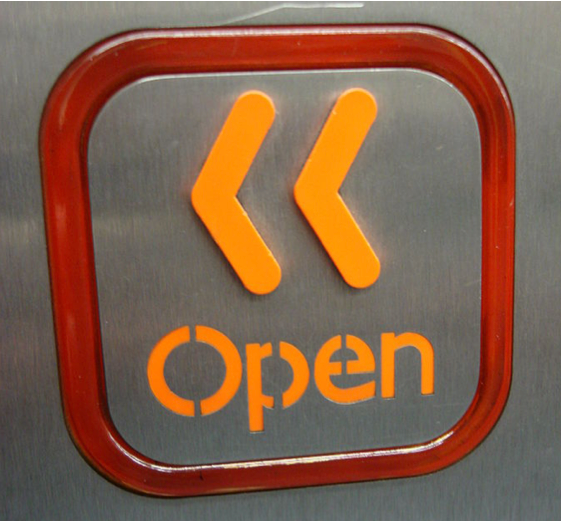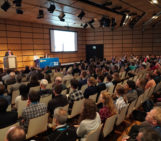Not so long ago I was in a meeting with EGU’s young scientist representatives, who had gathered online to discuss the issues facing those early in their academic careers. One member of this dedicated team put forward a compelling notion: that the future of open access is in the hands of today’s early-career researchers. This post aims to answer the question that followed: “how could EGU’s team of eager early-career researchers help their peers grab hold of the open opportunities out there?” by offering up a few routes to open science…
A lot of hard work, carefully created figures and data don’t make it to your publications, but they are still a useful part of the scientific process and can help other scientists if they can see what you found. A great way to share this sort of information is on Figshare – and it’s citable too.
The same goes for conference presentations – don’t let them gather dust on your desktop. The aim of a conference is to share your work more widely, so, when you’re done, put your slides up on sites like SlideShare to share it beyond the conference. Keep your contact details in the presentation and you could find yourself with new collaborators.

Open the doors to more collaborative geoscience. (Credit: Oxyman)
Posters can be made open too. After our annual General Assembly, we invite authors to upload their posters and presentations, but there’s no need to restrict your openness to the EGU conference. F1000 posters is an open access repository for posters in biology, so if your work bridges the biogeosciences, be sure to submit it there. If you’re in another field, try Figshare (despite the name, it’s not just for figures!).
The EGU offers a number of open access journals for the Earth, planetary and space sciences, but there are many more journals where you can publish your work, if the scope of EGU journals doesn’t quite cover your field. The American Geosciences Institute hosts a comprehensive list of open geo journals on their website, and the Directory of Open Access Journals is exactly what it says on the tin – a hub of high quality open access publications. The stringent criteria required to enter their database means that predatory open access journals are filtered out.
But what about impact? Going open doesn’t mean lower impact, in fact, with your paper being openly available to all, it’s more likely to be seen and cited, so the impact at the article level could well be higher than if it was in a subscription-based publication. You can track the impact of your research outputs using ImpactStory, or by using the Altmetric bookmarklet to keep tabs on more than just citations, from where it’s featured in news articles and blog posts to where it’s been mentioned on social media and more.

Don’t let your work gather dust, share it. (Credit: How Matters)
The European Research Council considers that providing free online access to publications is the most effective way of ensuring that the fruits of the research it funds can be accessed, read and used as the basis for further research. Many funders are also moving in this direction, providing further incentive to publish open access papers.
When your manuscript is ready, submit it to a preprint server (e.g., arxiv.org, peerj.com, or biorxiv.org). EGU papers have an open review process, which helps ensure the assessment of a submitted manuscript is thorough and fair, but it also means that the science is out in the open sooner – the merit of a preprint. This helps establish precedence, highlighting that you were working on something first, and can remove barriers to scientific progress (we all know peer review can take a while!). Some establishments aren’t a fan of this though; so before you put a preprint online, check Sherpa/Romeo to make sure your institute, funding body and the journal(s) you’re interested in are on board with the benefits of preprints.
Models are near ubiquitous in the geosciences and their importance in assessing the impact of climate change goes without saying. But what if you couldn’t replicate the results of, say, an important climate model? You would need to go back to the model’s code and see where your calculations and the ones before differed. Sharing code is compulsory for journals like Geoscientific Model Development, but many don’t stipulate the need to share it. You can go one step further to help your community by sharing your code on GitHub, whether it’s compulsory for your latest article or not.

Free the work from your desktop folders. (Credit: opensource.com)
With all these opportunities to go open, wouldn’t it be great if you had an opportunity to keep track of all your outputs? There’s an answer for that too – ORCID. ORCID is a unique researcher identifier that links all your research outputs, from manuscripts and conference abstracts to grant submissions and research figures, ensuring you get credit for the work you do.
For something less formal, but perhaps more open in that you can go beyond the academic community, try blogging about your research – we readily welcome guest posts here on GeoLog, but there are many places you can set your science free. Try The Conversation, SciLogs, pitching your idea to another geoscience blogger or better yet, establishing your own blog to write on. You can also go further to promote your research and facts about your field on social media – a great way to form connections with other academics and put your work in the public eye.
These are just a few thoughts on open geoscience, but there are likely more ways go open than could ever be summarised in a single post. Take this is a starting point, seek out more options for yourself, and, if you already have a few tips on how to make geoscience more open, spread the word.
By Sara Mynott, EGU Communications Officer
If you have any thoughts on other ways geoscientists can move towards open science, please add your thoughts to the comment thread below.




Pingback: Open geoscience | GeoLog | Writing, Marketing, ...